According to the latest Enervee Energy Consumer Tracker (December 2018), over 85% of Californians say it’s important to buy energy-efficient home products and clean vehicles that are economical to drive.
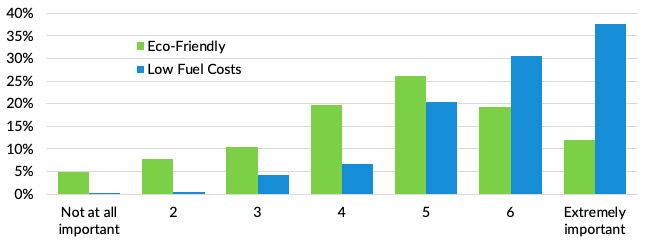
That’s perhaps to be expected. But other findings might surprise you.
Nearly 33% of Californians trust their energy company most to provide accurate information about how much energy an appliance or product uses—making utilities the #1 trusted source (manufacturers are #2 at 28%).
Utilities are the most trusted source of product energy-efficiency information.
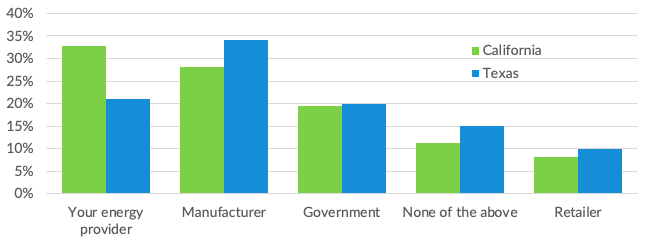
Trust was reversed in polling we conducted in Texas, where retail competition raised consumer protection issues. In both states, people trusted energy providers more than government or retailers—food for thought.
This degree of trust is an invaluable, yet underutilized, asset. Our poll shows that 3 in 5 Californians don’t think their energy provider is doing enough (e.g., to help them understand EV benefits), with another 21% undecided—meaning <20% feel utilities are doing enough. Customers want their provider to step up. Here’s why.
Common misconceptions and market failures make it hard for consumers to follow through on energy-smart intentions.
For example, most Californians believe the ENERGY STAR label signals the top 10% most efficient products—specifically for TVs.
70% of Californians believe the ENERGY STAR label signals super-efficient products.
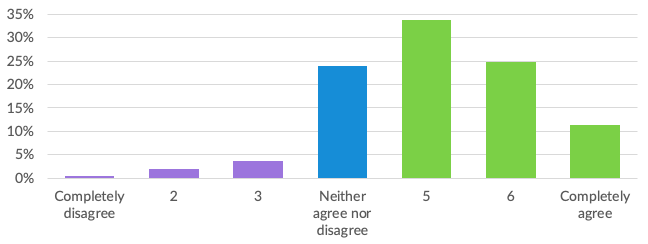
But that’s not the case. In 2017, 58% of TVs shipped nationwide were ENERGY STAR certified. And efficiency varies widely among certified models.
Why it matters: If shoppers assume ENERGY STAR = top 10%, we leave cost-effective savings on the table. Among ENERGY STAR TVs with online offers (Nov 2018), the most efficient 48–50" model used 50 kWh/yr, while the least efficient used 150 kWh/yr—a 3× difference.
Not all TVs are created equal.
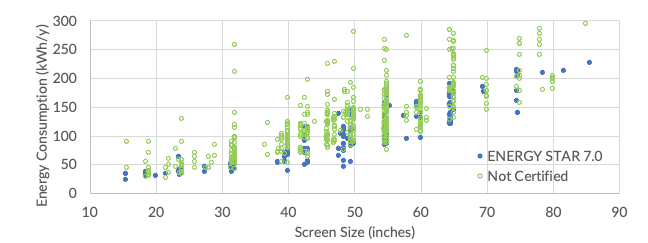
There’s also no correlation between the lowest price and highest efficiency at retail. How are consumers to know this?
Enter the Enervee Score®, embedded in consumer-facing Choice Engines. While Enervee pioneered Choice Engines for the energy sector in 2014, the concept is well established—see HBR on choice engines. Think Expedia/Kayak for travel or Zillow/Trulia for housing. Choice engines provide tailored, helpful recommendations without requiring the user to articulate every preference.
The Enervee Score helps make complex choices simple.
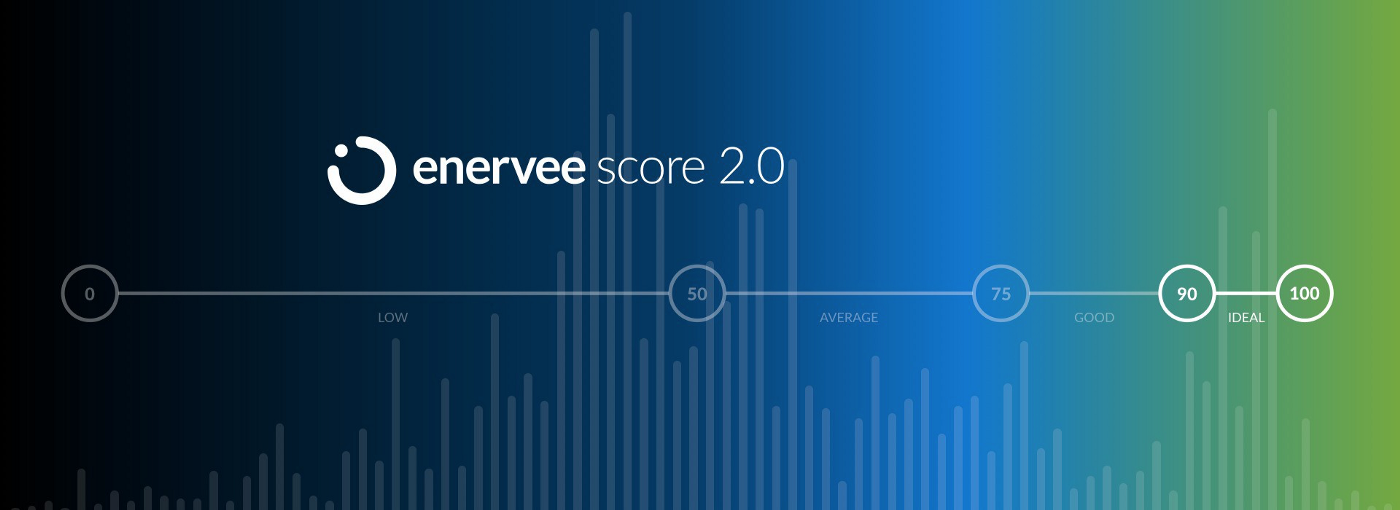
The 0–100, daily-updated Enervee Score prompts more energy-smart choices at the model level. Saving 100 kWh over a TV’s lifetime sounds small, but if everyone in CA chose the most efficient ENERGY STAR TVs (instead of the least efficient certified models) this year—often at similar prices—the statewide savings would reach hundreds of GWh. Nationwide, annual TV sales imply thousands of GWh—without rebates.
And that’s just TVs. Think water heaters, washers, EVs…
We also face a pervasive lay theory: “efficient costs more.” Research—including our own RCTs—shows people assume you must pay more to get efficient, and that pricier products are inherently more efficient.
Three out of four Californians believe efficient products cost more.
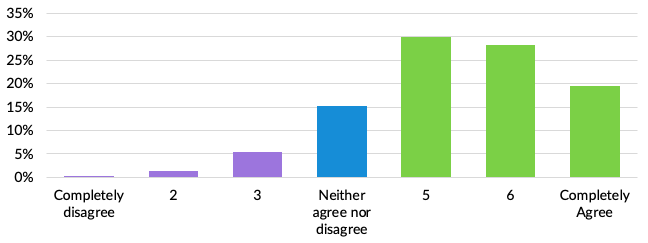
Sometimes the very most efficient models aren’t at the lowest price points (e.g., heat pump water heaters/dryers), where income-qualified incentives make sense. But price dispersion at retail is large, and when shoppers consider total cost of ownership, efficient often wins outright.
Even at a fixed price point, efficiency can vary dramatically.
Water heater choices at the $1,300 price point vary dramatically in efficiency.
Two 50-gallon Rheem models available at Home Depot for $1,300: one scores 41 and uses 2.7× more electricity than a heat-pump model that scores 90.

Guiding a shopper—already planning to spend $1,300—to the efficient model adds no upfront cost and can save $3,000+ in lifetime electric bills (at CA’s avg. $0.19/kWh). Early adopters in this bracket may also be considering rooftop solar and EVs; timely guidance boosts cost-effectiveness.
New data, made visible and actionable via online Choice Engines, can overcome market barriers, ENERGY STAR misinterpretations, and lay theories to close the gap between market and economic potential.
This isn’t just theory. If Californians could see that a highly efficient appliance costs no more and saves money over its lifetime, 96% say they’d likely buy it. And 89% say an online tool comparing car types by purchase price and running costs would be useful (44% extremely useful).
Visible efficiency is a game changer — and utilities can provide it with Choice Engines.
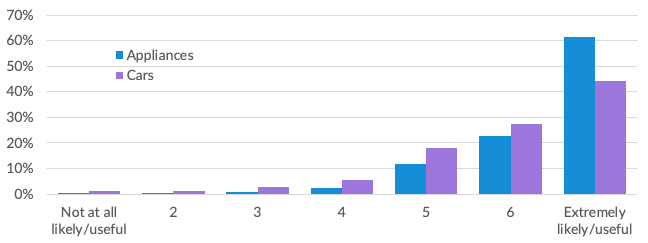
An independent assessment of PG&E’s Marketplace found the platform influential in 62% of electric water heater purchases (34% extremely). Influence never dipped below 40% in high-savings categories (water heaters, pool pumps, washers, thermostats).
Utilities have an unprecedented opportunity to capture market-based savings at scale.
Economics 101: lack of transparency = inefficient markets. The surveys and studies above suggest utilities can narrow the gap between economic potential and market potential—simply by making it easy to choose the efficient products and clean vehicles people already want.
Californians want efficient products and economical-to-drive vehicles—and they want utilities to help. PG&E has embraced that call: the PG&E Marketplace recently received AESP’s 2019 Outstanding Achievement Award for delivering savings without monetary incentives. That success can open the door to claiming market-based savings in California and beyond, as more utilities invest in Choice Engines to empower energy-smart shopping at scale.
